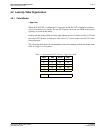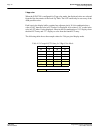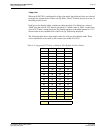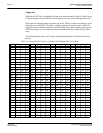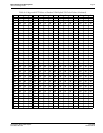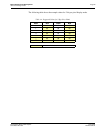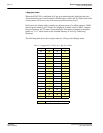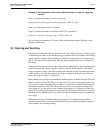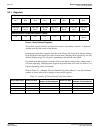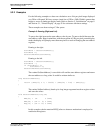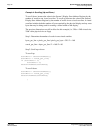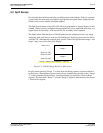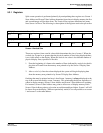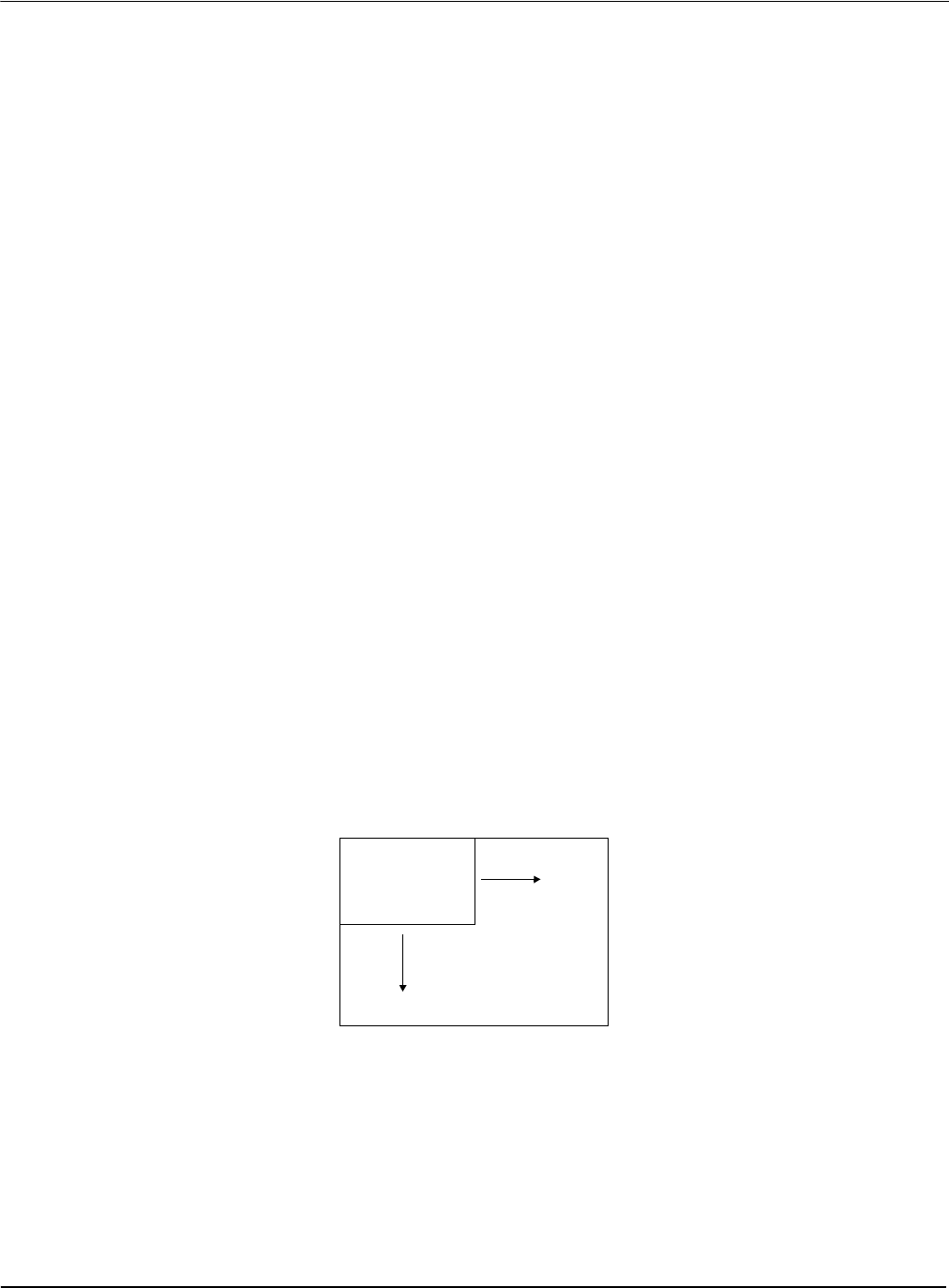
Epson Research and Development Page 25
Vancouver Design Center
Programming Notes and Examples S1D13705
Issue Date: 02/01/22 X27A-G-002-03
5 Advanced Techniques
This section contains programming suggestions for the following:
• virtual display
• panning and scrolling
• split screen display
5.1 Virtual Display
Virtual display refers to the situation where the image to be viewed is larger than the
physical display. The difference can be in the horizontal, vertical or both dimensions. To
view the image, the display is used as a window into the display buffer. At any given time
only a portion of the image is visible. Panning and scrolling are used to view the full image.
The Memory Address Offset register determines the number of horizontal pixels in the
virtual image. The offset register can be used to specify from 0 to 255 additional words for
each scan line. At 1 bpp, 255 words span an additional 4,080 pixels. At 8 bpp, 255 words
span an additional 510 pixels.
The maximum vertical size of the virtual image is the result of dividing 81920 bytes of
display memory by the number of bytes on each line (i.e. at 1 bpp with a 320x240 panel set
for a virtual width of 640x480 there is enough memory for 1024 lines).
Figure 5-1: “Viewport Inside a Virtual Display,” depicts a typical use of a virtual display.
The display panel is 320x240 pixels, an image of 640x480 pixels can be viewed by
navigating a 320x240 pixel viewport around the image using panning and scrolling.
Figure 5-1: Viewport Inside a Virtual Display
320x240
Viewport
640x480
“Virtual” Display



